
Art Therapy
“One of the basic rules of the universe is that nothing is perfect. Perfection simply doesn’t exist…..Without imperfection, neither you nor I would exist” ― Stephen Hawking



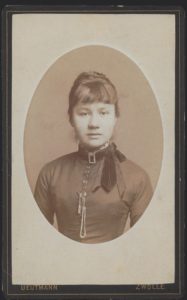
If not for Johanna Bonger, we would possibly not have known and appreciated the paintings of Vincent Van Gogh. Johanna married Theo Van Gogh in 1888 and moved to Paris from Amsterdam, where she was an English teacher. This was Paris of the belle époque, with theater, music, and art flourishing. Theo was a progressive art dealer, believing in artists who defied the realism imposed by the Académie des Beaux-Arts. Impressionists were his clients and heroes. He was devoted to his “tortured brother” as he described him, and their apartment was full of paintings which Vincent sent from his perpetual motion. He moved from France to Belgium to England and The Netherlands, and produced canvases at a dizzying rate. Jo, as she liked to call herself, bore a son in 1889 and agreed to call him Vincent.
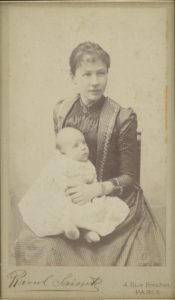
A few months before little Vincent was born, big Vincent cut off his ear after fighting with Paul Gauguin. Shortly after that a canvas arrived which was different in style. Vincent was fascinated by the night sky in Arles, and wrote to Theo “In the blue depth the stars were sparkling, greenish yellow, white, pink, more brilliant, more emeralds, lapis lazuli, rubies, sapphires” and was fixated by painting that sky. He sent the painting calling it “The Starry Night”. 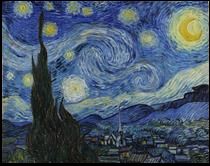
Theo found it disturbing. He felt his brother was drifting away, and knew the buyers would not understand it. He wrote to Vincent “I consider that you are strongest when you are doing real things”. Vincent arrived in Paris in the spring of 1890, and Jo, who expected to see a frail and delicate mental patient was surprised to meet, as she put it, “a sturdy, broad-shouldered man with a healthy color, a cheerful look in his eyes and something very resolute in his appearance.”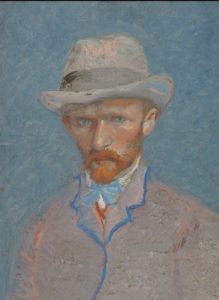 He left Paris to stay in the care of Dr. Paul Gachet in the village of Auvers-sur-Oise north of Paris, where he shot himself a few weeks later. He was 37 when he died, and Theo was by his side. Less than 3 month later Theo collapsed and suffered from the late stages of syphilis, which he contracted from visiting brothels earlier in his life. He died in January 1891, at age 33, leaving Jo and little Vincent with no support. The death of both brothers at such young ages could have consigned all the paintings to oblivion. The one who prevented this from happening and who presented the art world with the genius of
He left Paris to stay in the care of Dr. Paul Gachet in the village of Auvers-sur-Oise north of Paris, where he shot himself a few weeks later. He was 37 when he died, and Theo was by his side. Less than 3 month later Theo collapsed and suffered from the late stages of syphilis, which he contracted from visiting brothels earlier in his life. He died in January 1891, at age 33, leaving Jo and little Vincent with no support. The death of both brothers at such young ages could have consigned all the paintings to oblivion. The one who prevented this from happening and who presented the art world with the genius of 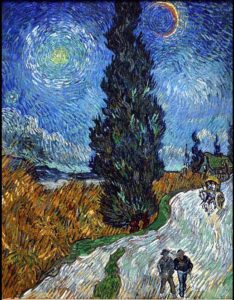 Van Gogh was no other than Jo Van Gogh-Bonger, whose diary was kept by the family after her death in 1925. Her grandson Johan allowed a researcher, Hans Luijten, to see it in 2009.
Van Gogh was no other than Jo Van Gogh-Bonger, whose diary was kept by the family after her death in 1925. Her grandson Johan allowed a researcher, Hans Luijten, to see it in 2009.
Hans Luijten was hired as a researcher in 1994 by the Van Gogh museum to develop a new critical edition of the 902 letters of Van Gogh’s correspondence, including the ones with his brother. He worked on the project for 15 years, and the result was a 6-volume publication “Vincent Van Gogh: The letters,” which was published in 2009. The letters showed Vincent Van Gogh’s relationship to the subjects of his painting.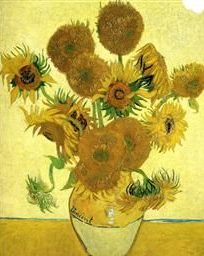 You can see in both his art and writing that he looked at the world as if everything were alive and aware. “He treated a tree the same as a human being” writes Luijten. After working on the letters, he understood that something was missing. Vincent was not known when he died, so the question he asked himself was, how exactly did the tortured genius become one of the most beloved figures in the history of art? Luijten embarked on a treasure hunt to solve the mystery. After searching in museums, and corresponding with archivists in Paris, Denmark and the States, he felt he was on the right path. “I started to see that she was the spider in the web. She had a strategy.” The “she” he is referring to is of course Johanna Van Gogh-Bonger. It was known that she wrote a diary. He realized the depth of her involvement and influence only when he managed to convince her grandson to let him read it. “It shows that without Jo there would have been no Van Gogh.” (Jo’s diaries and other materials are now available via the Van Gogh Museum’s website and library). The book, based on the diaries and other sources, “Alles voor Vincent” (“All for Vincent”), was published in 2019. Because it’s still available only in Dutch, it is just beginning to become known in the world of art scholarship.
You can see in both his art and writing that he looked at the world as if everything were alive and aware. “He treated a tree the same as a human being” writes Luijten. After working on the letters, he understood that something was missing. Vincent was not known when he died, so the question he asked himself was, how exactly did the tortured genius become one of the most beloved figures in the history of art? Luijten embarked on a treasure hunt to solve the mystery. After searching in museums, and corresponding with archivists in Paris, Denmark and the States, he felt he was on the right path. “I started to see that she was the spider in the web. She had a strategy.” The “she” he is referring to is of course Johanna Van Gogh-Bonger. It was known that she wrote a diary. He realized the depth of her involvement and influence only when he managed to convince her grandson to let him read it. “It shows that without Jo there would have been no Van Gogh.” (Jo’s diaries and other materials are now available via the Van Gogh Museum’s website and library). The book, based on the diaries and other sources, “Alles voor Vincent” (“All for Vincent”), was published in 2019. Because it’s still available only in Dutch, it is just beginning to become known in the world of art scholarship.
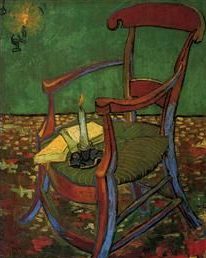 We owe Jo more than the fact that we are enjoying the wealth of Van Gogh’s paintings. In her efforts to have the world recognize these paintings as true art, she opened the door to understanding modern art, and what an artist really is. In the letters to his brother, Van Gogh offered his way of seeing objects through the colors as they appeared to him. He often felt the need to put into words what he was trying to achieve with color: “Town violet, star yellow, sky blue-green; the wheat fields have all the tones: old gold, copper, green gold, red gold, yellow gold, green, red and yellow bronze.”
We owe Jo more than the fact that we are enjoying the wealth of Van Gogh’s paintings. In her efforts to have the world recognize these paintings as true art, she opened the door to understanding modern art, and what an artist really is. In the letters to his brother, Van Gogh offered his way of seeing objects through the colors as they appeared to him. He often felt the need to put into words what he was trying to achieve with color: “Town violet, star yellow, sky blue-green; the wheat fields have all the tones: old gold, copper, green gold, red gold, yellow gold, green, red and yellow bronze.” Repeatedly he sought to explain his objective in capturing what he was looking at: “I tried to reconstruct the thing as it may have been by simplifying and accentuating the proud, unchanging nature of the pines and the cedar bushes against the blue.” One of the main things she understood from reading the letters and observing the paintings was that “an artist has to look within for guidance.”
Repeatedly he sought to explain his objective in capturing what he was looking at: “I tried to reconstruct the thing as it may have been by simplifying and accentuating the proud, unchanging nature of the pines and the cedar bushes against the blue.” One of the main things she understood from reading the letters and observing the paintings was that “an artist has to look within for guidance.”
What I find amazing is the fact that Jo understood almost intuitively that good art has to include looking within as well as looking to the outside. It is the unique combination of the two that creates good art and differentiates one artist from another. When the artist’s inner life is synchronized with the way he depicts objects (nature, people) and abstracts it, we can identify with the painting. This understanding, coupled with the idea of formalism (the study of an art product by analyzing and comparing form and style), led to the modern art era. From that perspective we can look at a painting to see the way objects are made and their purely visual or material aspects. Formalism in art history posits that everything necessary to comprehending a work of art is contained within it. In a modern art painting, formalism emphasizes compositional elements such as color, line, shape, texture, and other perceptual aspects, rather than content, meaning, or the historical and social context, which was the way classical paintings were created and perceived.
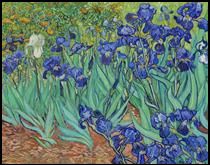 In “The Origin of the Work of Art”, Martin Heidegger, a German philosopher and a seminal thinker, describes the essence of art in terms of the concepts of being and truth. He argues that art is not only a way of expressing the element of truth in a culture, but the means of creating it and providing a springboard for revealing “that which is.” He claims that works of art are not merely representations of the way things are, but that each time a new artwork is added to any culture, the meaning of what it is to exist in that culture is inherently changed.
In “The Origin of the Work of Art”, Martin Heidegger, a German philosopher and a seminal thinker, describes the essence of art in terms of the concepts of being and truth. He argues that art is not only a way of expressing the element of truth in a culture, but the means of creating it and providing a springboard for revealing “that which is.” He claims that works of art are not merely representations of the way things are, but that each time a new artwork is added to any culture, the meaning of what it is to exist in that culture is inherently changed.
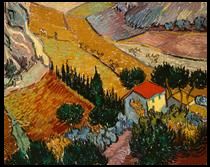 In essence, Jo contributed to the acceptance and flourishing of modern art, which began with the heritage of painters like Vincent van Gogh, Paul Cézanne, Paul Gauguin, Georges Seurat and Henri de Toulouse-Lautrec, all of whom were essential to the development of modern art. This term is usually associated with art in which the traditions of the past have been thrown aside in a spirit of experimentation. Modern artists experimented with new ways of seeing and with fresh ideas about the nature of materials and the functions of art. A tendency away from the narrative, which was characteristic for the traditional arts, and toward abstraction, is a characteristic of most modern art.
In essence, Jo contributed to the acceptance and flourishing of modern art, which began with the heritage of painters like Vincent van Gogh, Paul Cézanne, Paul Gauguin, Georges Seurat and Henri de Toulouse-Lautrec, all of whom were essential to the development of modern art. This term is usually associated with art in which the traditions of the past have been thrown aside in a spirit of experimentation. Modern artists experimented with new ways of seeing and with fresh ideas about the nature of materials and the functions of art. A tendency away from the narrative, which was characteristic for the traditional arts, and toward abstraction, is a characteristic of most modern art.
As an art therapist and artist, I believe that Art, as creativity, is something humans must do by their very nature. No other species creates art. There is a basic human instinct for harmony, balance, rhythm. Art at this level is not an action or an object, but an internal appreciation of balance and harmony, and therefore an aspect of being human beyond utility. We experience beauty in the world around us and in each other and express our experience in our creations. Albert Einstein stated: “The most beautiful thing we can experience is the mysterious. It is the source of all true art and science.”